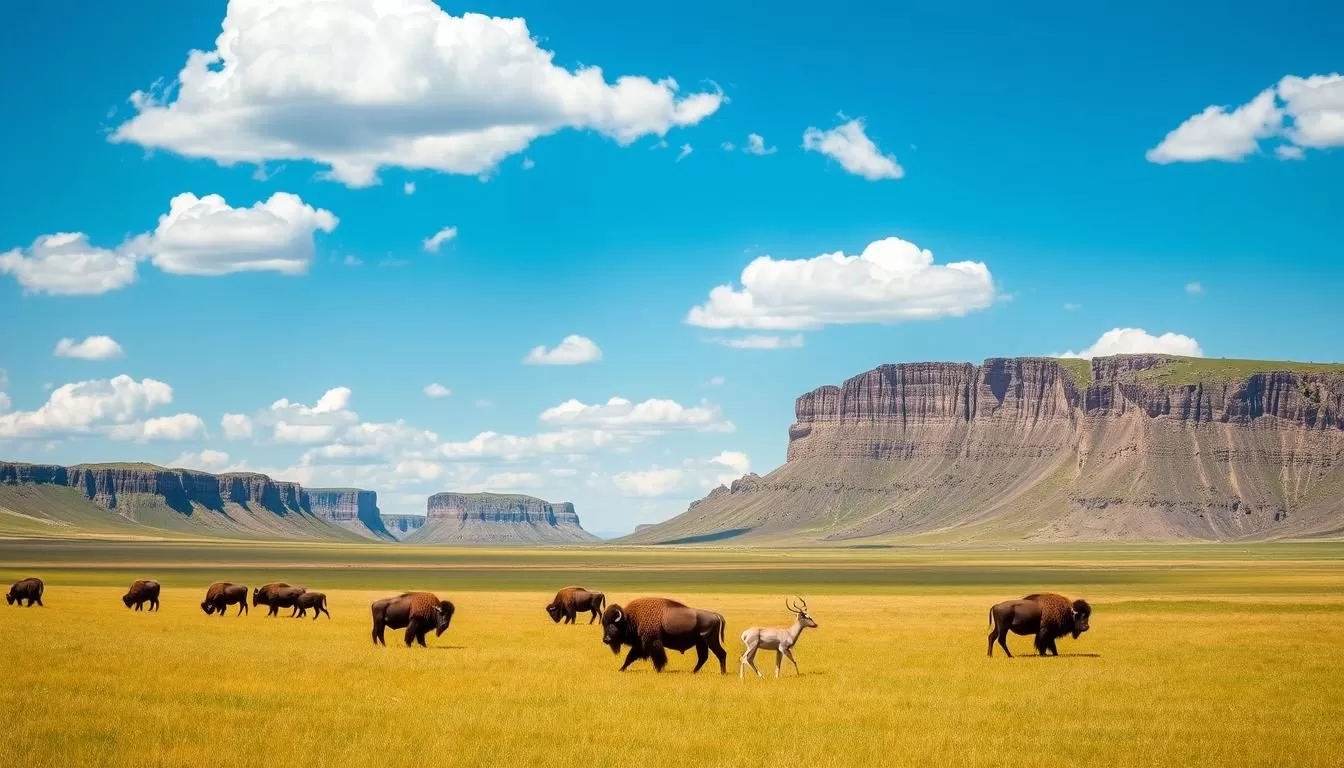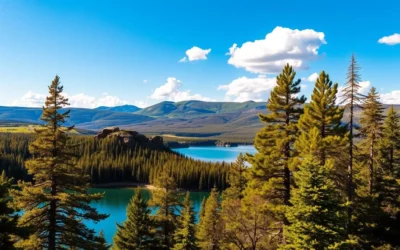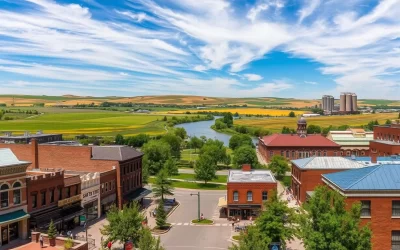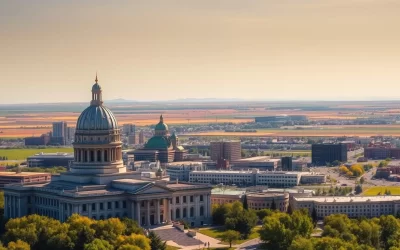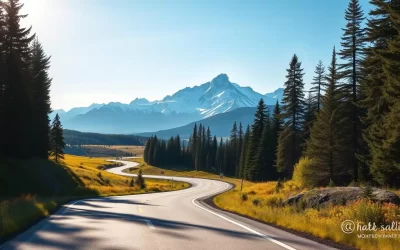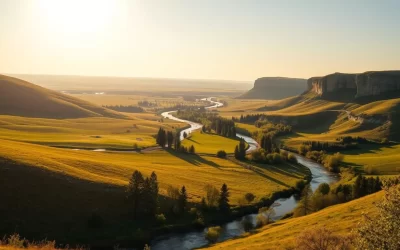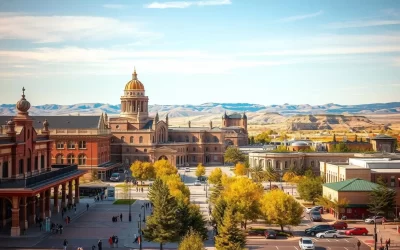You are about to embark on an adventure in one of Canada’s most unique national treasures. Grasslands National Park is a haven for those seeking solitude and a deep connection with nature.
This critically endangered ecosystem is preserved within the park’s boundaries, offering a glimpse into the untouched prairie wilderness. Divided into the West and East Blocks, the park provides diverse landscapes and experiences, from wildlife viewing to stargazing under some of the darkest skies.
With only around 20,000 visitors annually, you can explore the park’s hiking trails, enjoy scenic drives, and experience the serene beauty of this vast, open landscape.
Discovering Grasslands National Park: Canada’s Prairie Wilderness
Grasslands National Park offers a unique blend of prairie wilderness and badlands that is sure to captivate any visitor. As you explore this vast national park, you’ll discover diverse landscapes that are teeming with wildlife and rich in history.
Location and Park Overview
Grasslands National Park is located in southern Saskatchewan, Canada. It is divided into two main areas: the West Block and the East Block. The park is known for its prairie grasslands and badlands, offering a mix of ecosystems that support a wide range of flora and fauna. The park’s unique landscape has been shaped by millions of years of erosion, creating a dramatic and beautiful scenery.
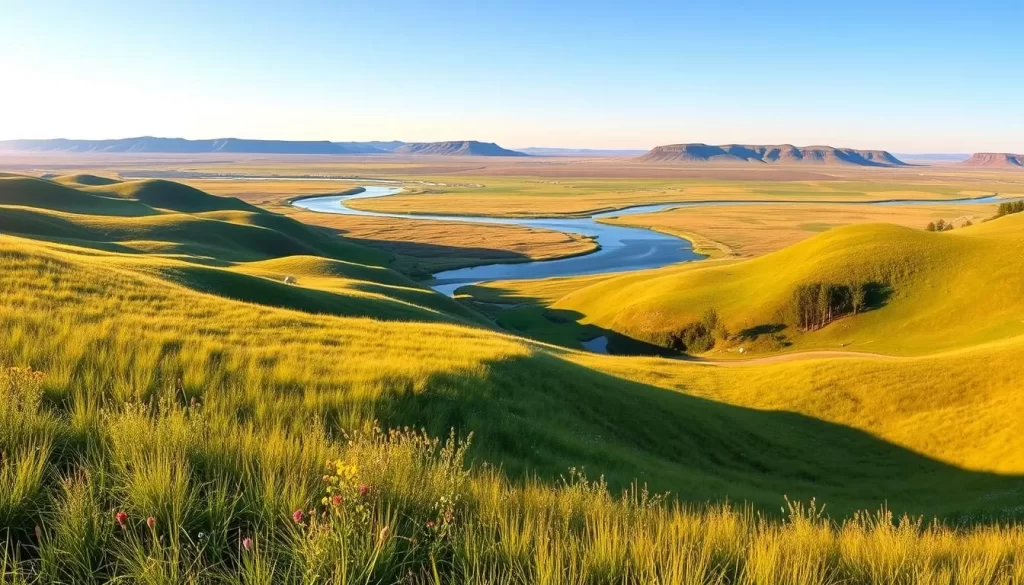
West Block vs. East Block: What to Expect
The West Block and East Block of Grasslands National Park have distinct characteristics. The West Block is more accessible and features the Frenchman River Valley, offering excellent opportunities for wildlife viewing and hiking. The popular Ecotour Scenic Drive is also located here, providing a convenient way to explore the area.
In contrast, the East Block is known for its spectacular badlands formations and the Valley of 1000 Devils. The Badlands Parkway, an 11-kilometre road, winds along the valley rim, offering breathtaking views of Rock Creek and the badland formations below. Notably, the East Block is where Western Canada’s first dinosaur bones were discovered in 1874.
Depending on your interests, you may want to allocate your time differently between the two blocks. If you’re interested in wildlife viewing and hiking, the West Block might be your preference. For those fascinated by badlands and dinosaur history, the East Block is a must-visit.
When to Visit Grasslands National Park
Grasslands National Park, with its vast prairie wilderness, is a destination that offers unique experiences throughout the year. Whether you’re interested in wildlife viewing, hiking, or simply taking in the breathtaking scenery, timing your visit right can make all the difference.
Seasonal Highlights
The park transforms with the seasons, offering a variety of experiences. In the spring, the prairie comes alive with newborn wildlife, making it an ideal time for wildlife enthusiasts. Summer brings warm weather, perfect for hiking and exploring the park’s trails. Autumn is characterized by the changing foliage, creating a picturesque landscape ideal for photography. Winters are harsh but serene, offering a unique opportunity for stargazing in the park’s Dark Sky Preserve.
| Season | Highlights | Activities |
|---|---|---|
| Spring | Newborn wildlife | Wildlife viewing |
| Summer | Warm weather | Hiking, exploring |
| Autumn | Changing foliage | Photography |
| Winter | Serene landscapes | Stargazing |
Weather Considerations
The weather in Grasslands National Park can be unpredictable, with conditions changing rapidly. It’s essential to be prepared for all types of weather, regardless of the season. Bringing extra layers for hiking is advisable due to potential temperature fluctuations and wind. The prairie landscape offers little protection from the elements, so checking the weather forecast before heading out and being prepared for quick changes is crucial. Visiting during the early morning or evening can be rewarding, with these times often ideal for wildlife viewing and photography, respectively.
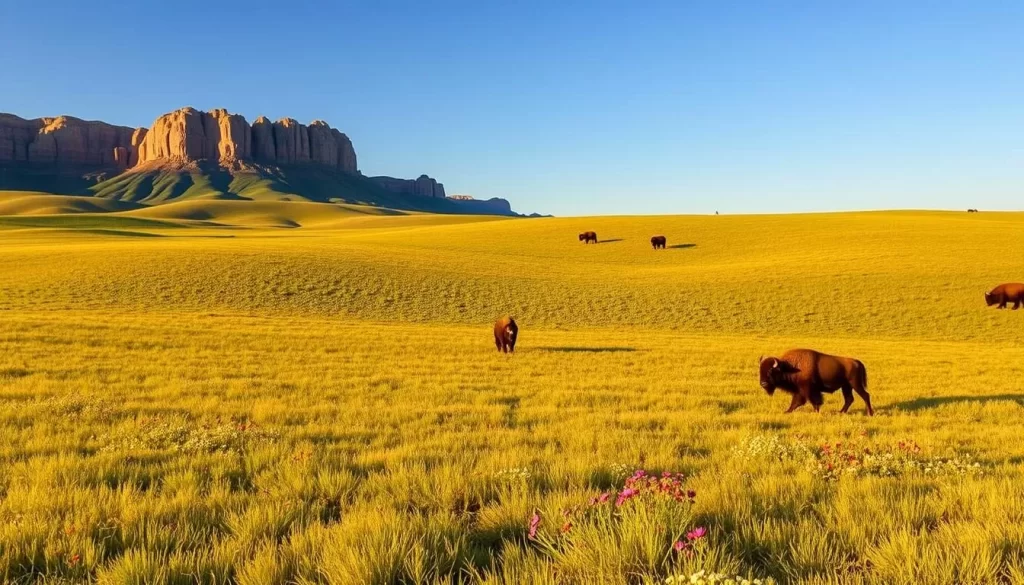
Wildlife Encounters in Grasslands National Park
As you explore Grasslands National Park, you’ll encounter an array of wildlife that calls this prairie wilderness home. The park’s diverse landscape supports a wide range of species, making it a fascinating destination for nature enthusiasts and wildlife photographers alike.
Bison Herds: Where to Spot Them
The national park is renowned for its free-roaming bison herds. These majestic creatures can often be spotted grazing in the open grasslands, particularly in areas with lush vegetation. Keep a safe distance, as bison are powerful and unpredictable. The West Block of the park is known for its high concentration of bison, making it a prime location for viewing these iconic animals.
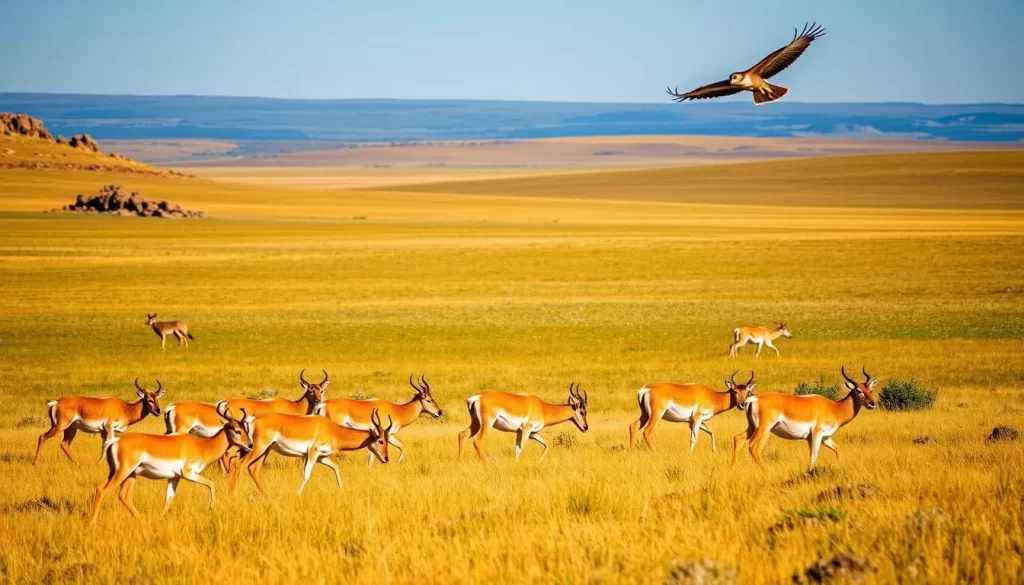
Black-Tailed Prairie Dog Towns
Another highlight of visiting Grasslands National Park is the opportunity to observe black-tailed prairie dog towns. These social creatures live in complex burrow systems and are a delight to watch as they scurry about, often standing sentinel at the entrances to their underground homes. Their presence also attracts various predators, adding to the dynamic wildlife viewing experience.
Other Wildlife to Watch For
Beyond bison and prairie dogs, the park is home to a variety of other wildlife. Deer species, including mule deer, white-tailed deer, and pronghorn antelope, are common. The area is also known for its rich birdlife, with species such as burrowing owls and ferruginous hawks. Be on the lookout for other creatures like coyotes, jackrabbits, and even the occasional bobcat, though many species may hibernate or migrate during the harsh winter months.
Top Hiking Trails in Grasslands National Park
Discover the unique landscapes and ecosystems of Grasslands National Park on its top hiking trails. The park offers a variety of trails for different skill levels, ensuring that there’s something for every hiker.
70 Mile Butte Trail
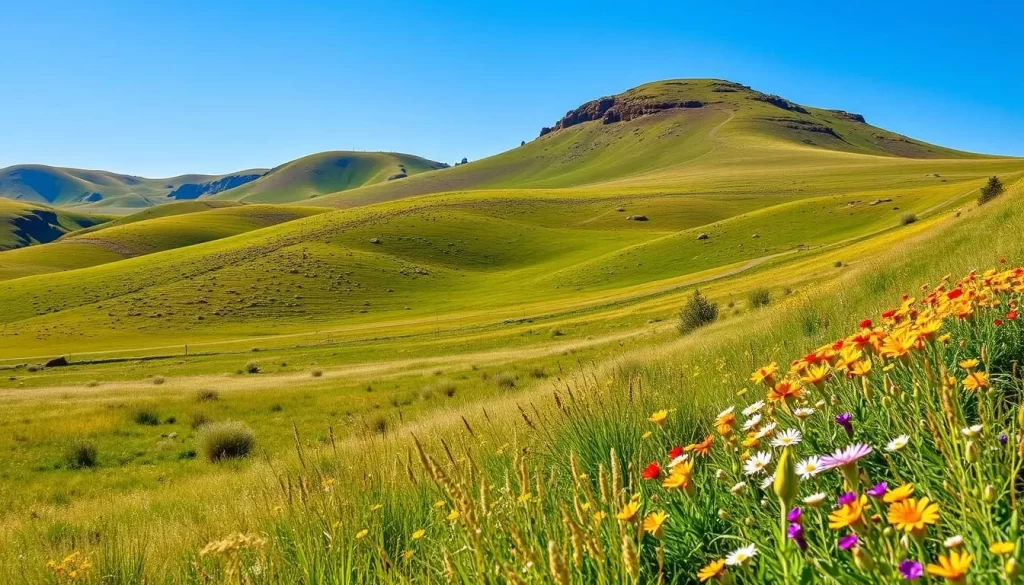
The 70 Mile Butte Trail is a must-hike in Grasslands National Park, offering stunning views of the surrounding prairie landscape. This trail is a great way to experience the park’s unique geology and diverse wildlife.
Broken Hills Trail
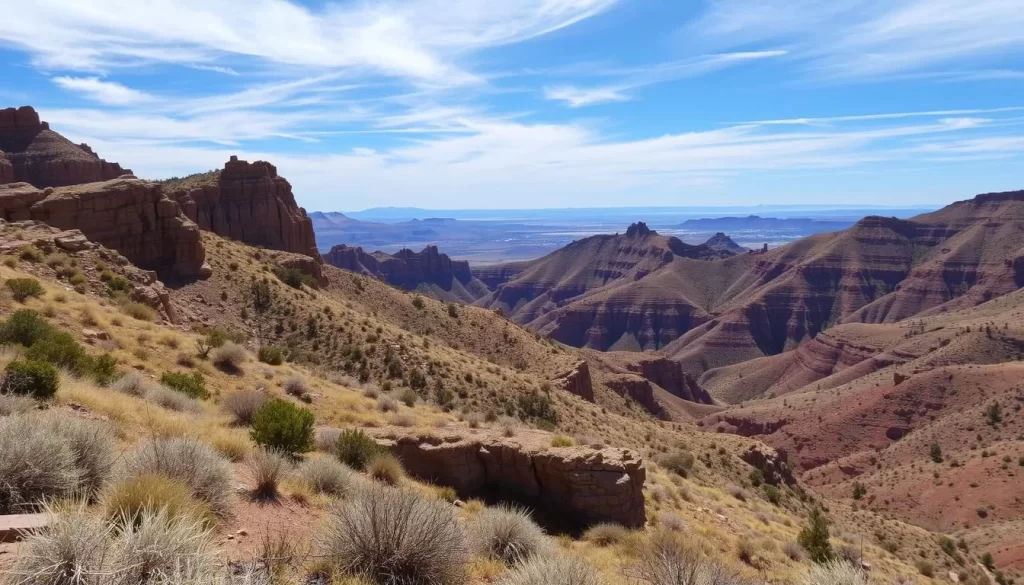
The Broken Hills Trail takes you through a rugged and scenic landscape, showcasing the park’s diverse ecosystems. Hikers can expect to see a variety of flora and fauna, including native grasses and wildlife.
Valley of 1000 Devils Route
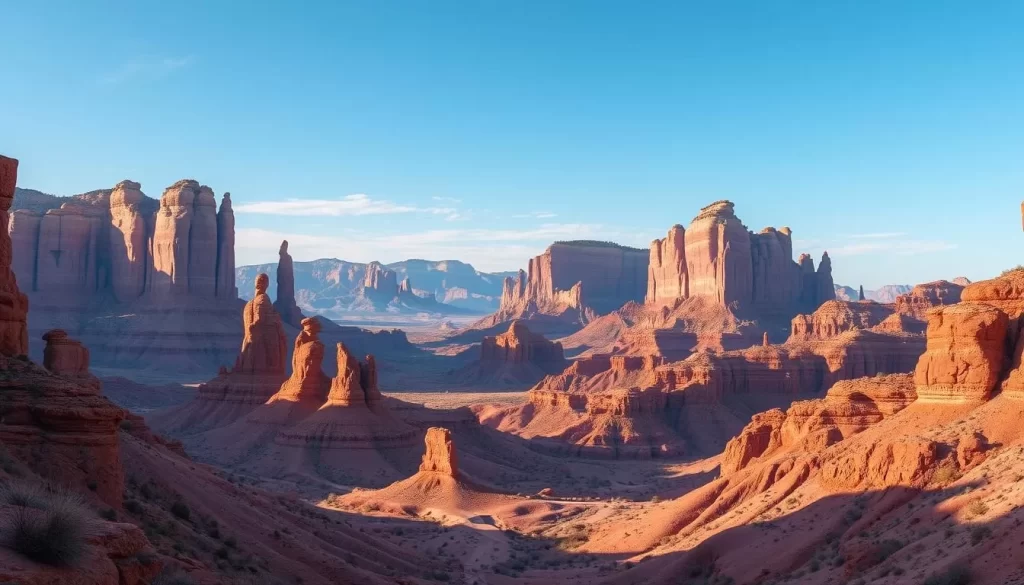
The Valley of 1000 Devils Route is a challenging hike that rewards adventurers with breathtaking views of the valley below. This trail is ideal for experienced hikers looking for a unique adventure.
Shorter Trails for Casual Hikers
For visitors with limited time or hiking experience, Grasslands National Park offers several shorter trails. The Riverwalk Trail is a 3.3km easy loop that follows the Frenchman River through different types of grasses. The Two Trees Trail, a 4km moderate loop, offers great views of 70 Mile Butte. Other options include the Top Dogtown Trail, a 750m easy trail ideal for prairie dog viewing, and the Larson Interpretive Trail, a 1.4km easy loop that provides information about local cowboy history. Most of these shorter trails are located in the West Block and are accessible from day use areas along the Ecotour Road.
These trails provide a great way to experience the park’s natural beauty without committing to a long, strenuous hike. Whether you’re looking for a leisurely stroll or a more challenging adventure, Grasslands National Park has a trail that’s right for you.
Grasslands National Park: Best Things to Do – Top Picks
From scenic drives to stargazing, Grasslands National Park is a haven for outdoor enthusiasts. The park offers a variety of experiences that allow visitors to immerse themselves in its natural beauty.
Ecotour Scenic Drive
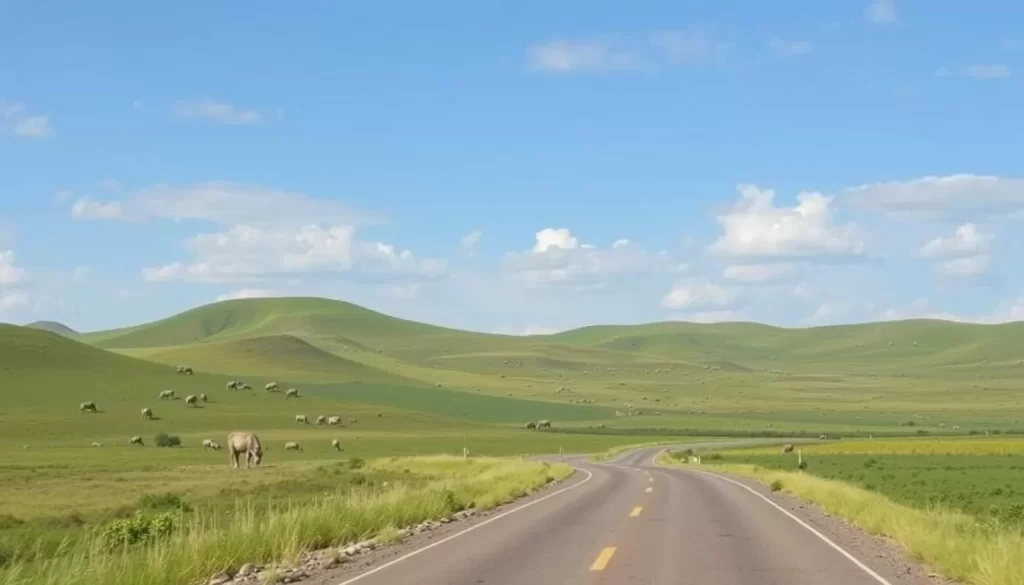
The Ecotour Scenic Drive is a must-do when visiting Grasslands National Park. This scenic drive takes you through some of the park’s most stunning landscapes, offering opportunities to spot wildlife such as bison, prairie dogs, and various bird species. The drive is approximately 75 kilometers long and can take several hours to complete, depending on how many stops you make along the way.
Badlands Parkway in the East Block
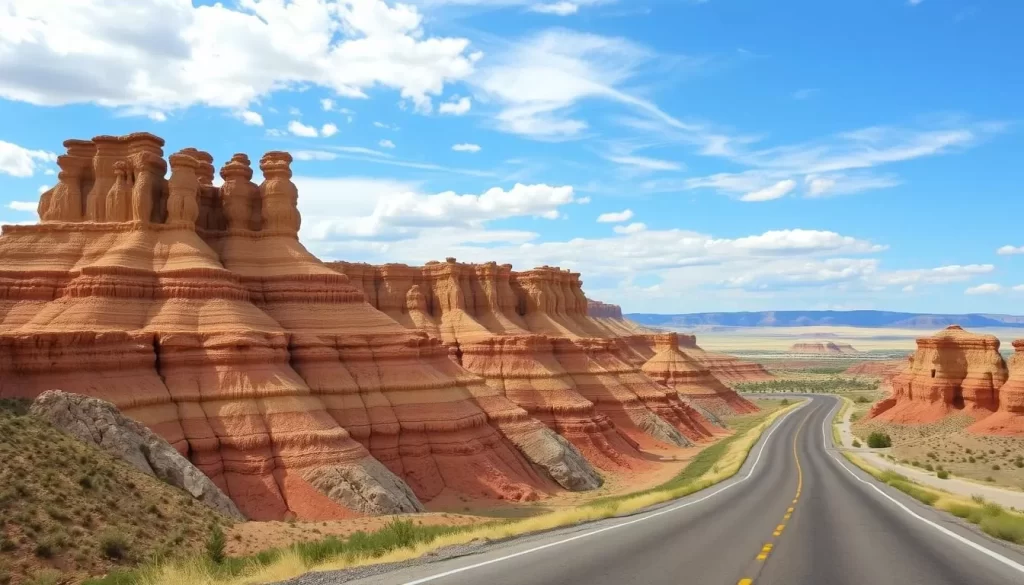
For those visiting the East Block of Grasslands National Park, the Badlands Parkway is a highlight. This scenic drive winds through unique badlands formations, providing breathtaking views and photo opportunities. The drive is a great way to experience the park’s diverse geology and ecosystems.
Stargazing in the Dark Sky Preserve
Grasslands National Park is renowned for its dark skies, making it one of Canada’s largest and darkest Dark Sky Preserves. At night, the sky is filled with countless stars, offering an unforgettable stargazing experience. The remote location and lack of light pollution create ideal conditions for observing the night sky. Visitors are encouraged to bring a star chart or download a stargazing app to help identify stars, planets, and constellations. The best locations for stargazing include the campgrounds and viewpoints along the Ecotour Road. During the summer months, Parks Canada may offer special stargazing programs or events, enhancing the experience.
Whether you’re driving through the scenic landscapes or gazing up at the stars, Grasslands National Park offers a range of unforgettable experiences. With its diverse wildlife, unique geological formations, and exceptional dark skies, the park is a must-visit destination for nature lovers and outdoor enthusiasts.
Where to Stay: Accommodation Options
When planning your trip to Grasslands National Park, finding the right place to stay is crucial. The park and its surrounding areas offer a variety of accommodation options to suit different needs and preferences.
Camping in Grasslands National Park
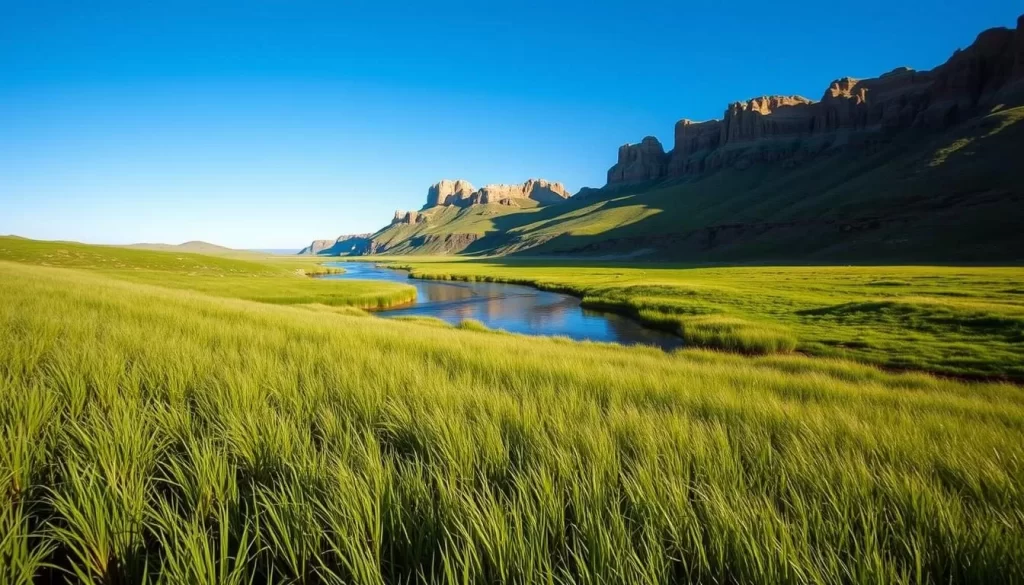
Camping is a popular way to experience Grasslands National Park. The park offers camping facilities that allow you to immerse yourself in the natural beauty of the prairies. You can enjoy the serene landscapes and wildlife viewing opportunities from the comfort of your campsite.
Nearby Towns and Lodging
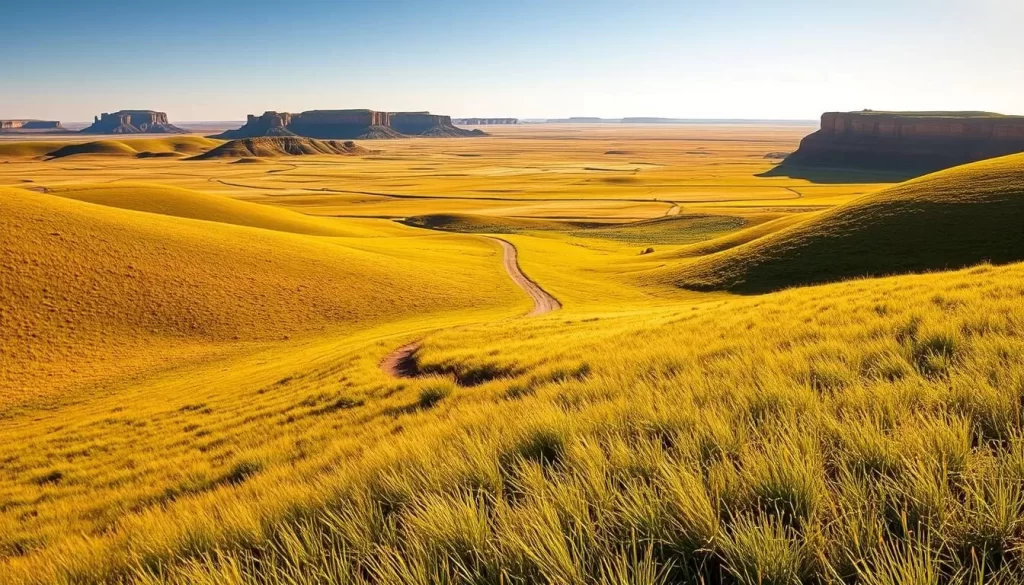
For those who prefer not to camp, the nearby town of Val Marie offers several accommodation options. You can stay at The Crossing at Grasslands, which features self-catering units near the 70 Mile Butte access road. Another option is The Convent Inn, a restored convent turned country inn, offering a unique stay experience. The Val Marie Hotel is also available, providing the only restaurant in town that serves Canadian and Chinese cuisine.
Val Marie has limited services but includes a restaurant, grocery store, and gas station. It’s essential to fill up on gas as stations are scarce in the area. The town also hosts Prairie Wind and Silver Sage – Friends of Grasslands in the Little Brick School House, which serves as a museum, bookstore, coffee shop, and art gallery.
It’s worth noting that accommodation options near the East Block of the park are limited, making camping the primary choice for that area. Regardless of your choice, it’s recommended to book your accommodations well in advance, especially during the peak summer season, due to limited availability.
Practical Tips for Visiting Grasslands National Park
As you plan your trip to Grasslands National Park, it’s essential to be prepared for the unique challenges of this prairie wilderness. The park offers a rich experience, but visitors must be aware of the environment and take necessary precautions.
What to Pack and Prepare
When visiting Grasslands National Park, it’s crucial to pack appropriately. Carrying extra water is vital due to the risk of dehydration in the hot, dry climate. Additionally, checking the weather forecast before heading out is advisable, as storms can develop quickly on the prairies.
- Comfortable hiking shoes
- Sun protection (sunscreen, hat, sunglasses)
- Water and snacks
- Map and compass or GPS device
Safety Considerations
Safety is paramount when exploring Grasslands National Park. Maintain at least 100m distance from bison, as they are wild animals. Be aware of your surroundings, particularly watching for rattlesnakes on trails.
| Safety Tip | Description |
|---|---|
| Wildlife Distance | Keep 100m away from bison |
| Trail Awareness | Watch for rattlesnakes on trails |
| Navigation | Understand the difference between ‘trails’ and ‘routes’ |

Understanding the difference between ‘trails’ and ‘routes’ is also crucial. ‘Trails’ are defined paths often marked with yellow markers, while ‘routes’ are less defined and require navigation skills. Informing someone of your hiking plans is a good practice, especially for more remote trails or routes.
Conclusion: Embracing the Prairie Experience
Exploring Grasslands National Park is a chance to connect with one of North America’s most endangered ecosystems. As a national park, it plays a vital role in preserving the mixed-grass prairie, a landscape that is both beautiful and fragile. During your visit, you can experience the park’s unique appeal through various activities, such as wildlife encounters, hiking trails with panoramic views, scenic drives, and stargazing in the Dark Sky Preserve.
For an ideal experience, consider exploring both the West and East Blocks over several days. This will give you ample time to appreciate the park’s diverse landscape and spot its rich wildlife. As you immerse yourself in the prairies, you’ll gain a new appreciation for this distinctive national park. Your time in Grasslands National Park will forever change the way you view and appreciate the prairie landscape.
The above is subject to change.
Check back often to TRAVEL.COM for the latest travel tips and deals.
